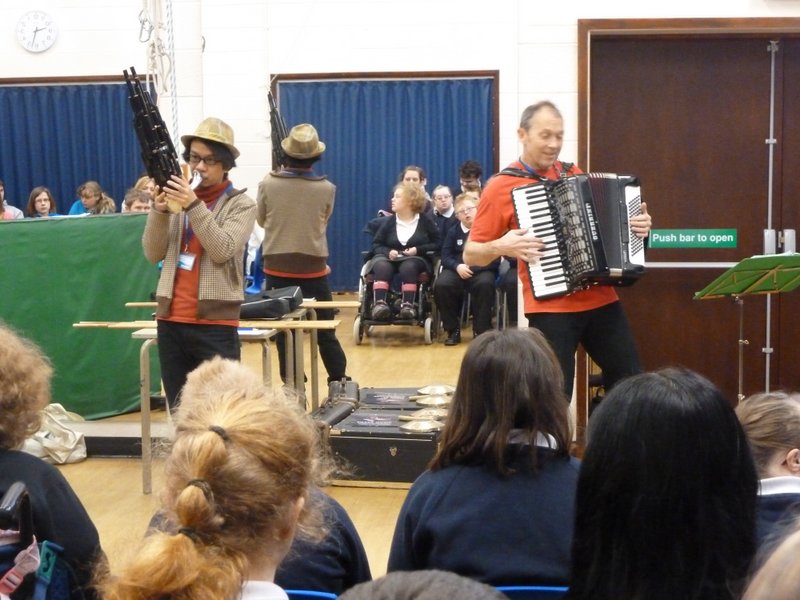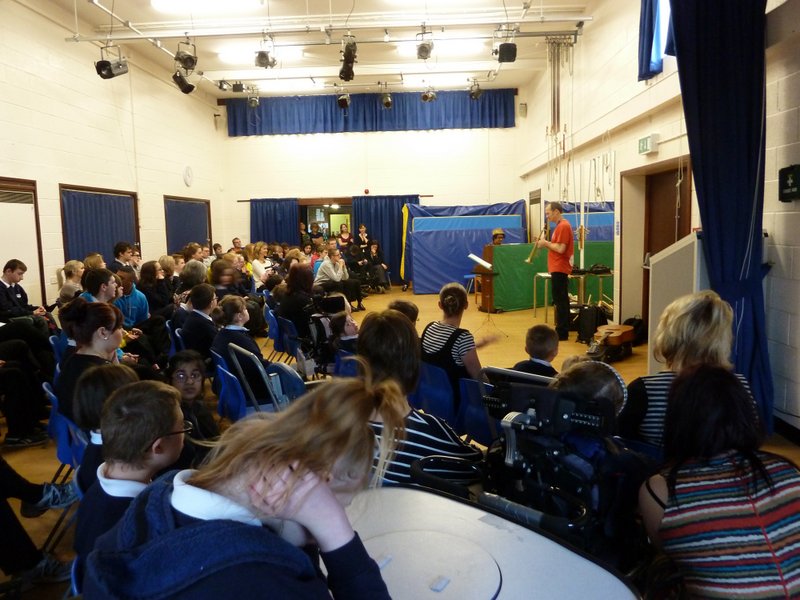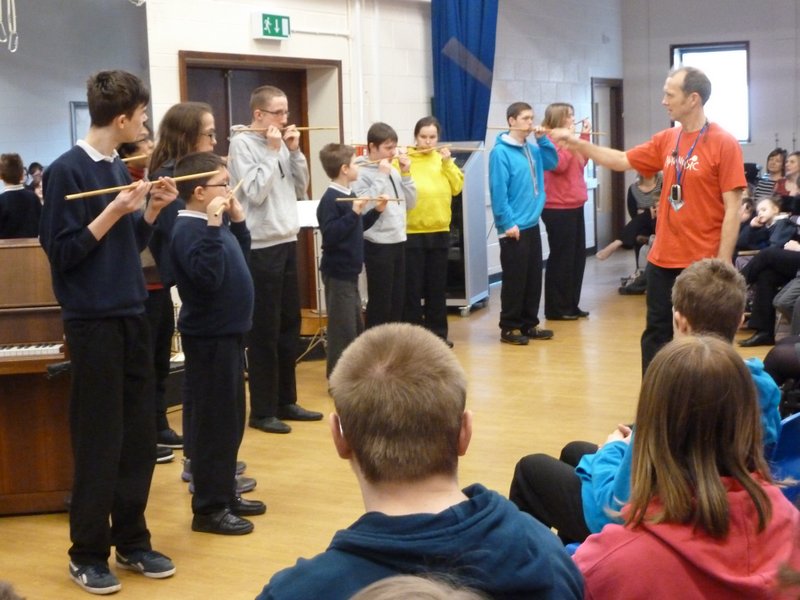A long term relationship between a SEND school and a local community music organisation.
What is the context of the work?
Over 18 years, The Loyne Specialist School in Lancaster ( http://www.loyneschool.org.uk ) has built up a relationship with a local music organisation, More Music ( http://www.moremusic.org.uk ). This has allowed school music programmes to grow and develop. The school has approximately 105 students with complex disabilities (SLD) from nursery age through to Further Education (FE) and is also a Teaching School, overall being rated by Ofsted as 'outstanding'.
More Music creates sustained programmes with various partners in the region and beyond and is committed to access and creativity. Projects have focussed on every age group, have integrated with other institutions, have been linked to Continuing Professional Development (CPD) for everyone and have taken advantage of national and regional initiatives. Sometimes the work is led by the school and sometimes by the music charity, but there is always collaboration with a focus on learning and embedding good practice.
What is the content of the work?
There has been a wide range of projects that have delivered a variety of positive outcomes. These include the following:
- Making new songs in response to outside community contexts and personal experience and taking these into performance and recording opportunities;
- Learning music with a strong rhythmic base from a number of different cultures, with an interactive and vibrant methodology, such as Javanese Gamelan, Chinese Lion Drumming, Brazilian Samba, Mexican Characha;
- Listening to inspirational performance from local musicians and international visitors;
- Making instruments and experimenting with different sounds;
- Singing and vocalising in groups, and then performing and filming the outcomes;
- Creating bands using a variety of different instruments; and
- Learning about music in the widest sense – history, geography and context.
- Developing motor skills, vocal skills and instrumental skills (including technical);
- Expressing thoughts and feelings about various things through music, including developing an understanding of personal relationships to the world;
- Discovering their own music and musical identity;
- Having fun and letting go; and
- Learning about music from other cultures and developing listening skills.
- Working collaboratively in groups, listening and waiting;
- Integrating with people from other places and sharing perceptions of the world;
- Going out, looking at the world outside and reflecting on it together; and
- Celebrating achievement together.
What are the key features of the teaching and learning approach?
Every project uses a different methodology, although there are generic features being evidenced:

- The partnership between school staff and visiting musicians is seen as crucial, with time for collective planning (that allows the specific needs of the young people to be addressed) and reflection (that allows all partners to learn from each other);
- Long-term relationship building is nurtured so that skills and learning can be developed slowly and with particular care for individual needs;
- Creative kinaesthetic-biased exploration is explored that uses personal experience as a way of gathering ideas and then sharing them with a wider community;
- There is a clear presentation of materials that is tailored to specific groups (including age or ability);
- Activities make use of school themes and contexts in order to support music programmes that link well into the rest of the pupils' learning;
- A commitment to group leadership so that everyone is included and specific needs are addressed; and
- An emphasis on good communication, such as in planning and monitoring between the school and the music partner.
How is the work being reviewed?
As there have been such a variety of More Music projects over the years, a range of evaluation methods have been used. These include session evaluations, student feedback discussions, reviews with the leadership team and Creative Partnerships, with triangulated outcome evaluations. Regular meetings between the two partners ensure that there is a creative dialogue that allows new projects to develop in response to the programmes being undertaken with each partner. This dialogue may then lead to specific fundraising.

What are the positive outcomes for children/young people – are they some or all of musical, social, personal, educational - how and when can they be identified?
Positive outcomes include:
- New connections with other parts of the community and a decreasing sense of isolation;
- An opportunity to share feelings and thoughts;
- Progression in skill development – such as vocal, instrumental and in cultural understanding;
- Enjoyment, fun, life enhancing experiences;
- Physical development – co-ordination and vocal development; and
- Increased evidence of individual confidence and self-reliance.
What are the key features of teacher/leader behaviour that are enabling those positive outcomes?
Key features of teacher/leader behaviour include:
- A belief in the power of music to deliver many outcomes;
- Creative ideas for projects developed by the leaders;
- Enjoyment in being creative and in joining in;
- Belief in youth consultation, leading both the direction and the content of projects; and
- Good reflective processes.
What are the key features of context, content and activities that are enabling those positive outcomes?
Other key contextual features include:

- A commitment from the leadership to invest time and funding;
- Sufficient and relevant resources – space, equipment;
- Good personal relationships between leadership and staff in both partners; and
- A context of outside programmes that allow school projects to have a wider impact.
What other factors in this case are contributing to those positive outcomes?
There is a long-term commitment and relationship development.
How replicable or adaptable is it?
Almost everywhere there are organisations and individuals who have the skills to work in the SEND context. Most would be interested in developing long-term relationships if there is an opportunity. The key lies in harnessing leadership belief and commitment in order to drive the allocation of appropriate resources . There are many models of partnership projects that can be used if there is the will. Arts Council Bridge organisations have databases of cultural organisations and can match them to the schools if there is a lack of information.
